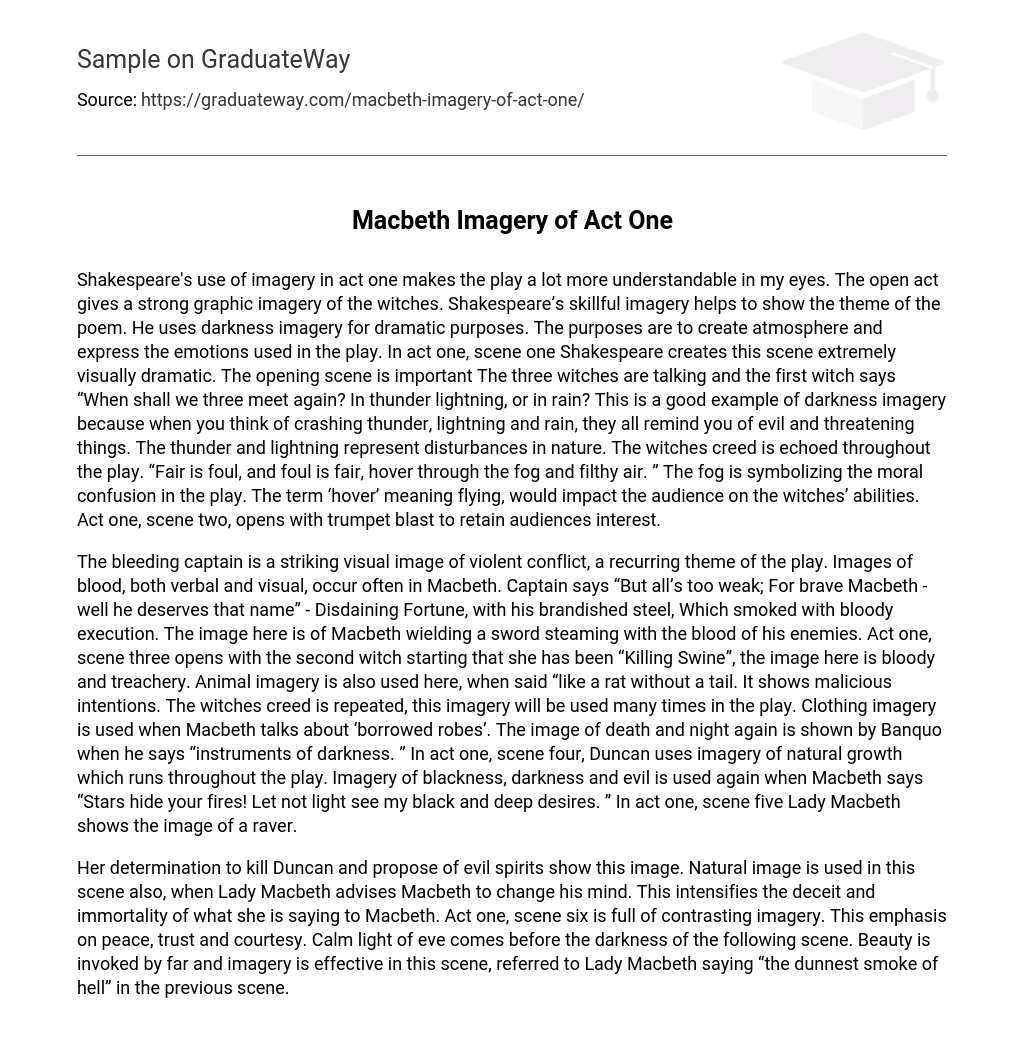Shakespeare’s use of imagery in act one enhances my understanding of the play. The opening scene creates a vivid image of the witches through strong graphic imagery. Shakespeare skillfully utilizes darkness imagery in order to convey the play’s theme and create a dramatic atmosphere. In act one, scene one, the visual dramatics are emphasized as the three witches engage in conversation. The first witch’s mention of meeting in thunder, lightning, or rain exemplifies darkness imagery, evoking a sense of evil and threat. The thunder and lightning symbolize disturbances in nature, while the witches’ creed of “Fair is foul, and foul is fair, hover through the fog and filthy air” reflects the moral confusion in the play. The term “hover” implies flying and showcases the witches’ abilities. Act one, scene two begins with a trumpet blast to maintain audience interest.
The striking visual image of the bleeding captain represents violent conflict, a recurring theme in Macbeth. The play is full of blood imagery, both in words and visuals. The captain describes Macbeth as deserving his name, wielding a sword that is steaming with the blood of his enemies. In act one, scene three, the second witch mentions killing swine, portraying a bloody and treacherous image. Animal imagery is also present when the witch compares herself to a tailless rat, signifying malicious intentions. The witches’ creed is repeated throughout the play, establishing its imagery as a recurring motif. Macbeth uses clothing imagery when he talks about “borrowed robes.” Banquo describes the witches as “instruments of darkness,” further emphasizing the imagery of death and night. In act one, scene four, Duncan utilizes imagery of natural growth that continues throughout the play. Blackness, darkness, and evil are once again portrayed when Macbeth expresses his desire to hide his dark desires from light. Lastly, in act one, scene five, Lady Macbeth embodies the image of a raver.
The determination of Lady Macbeth to kill Duncan and her association with evil spirits are evident in this representation. Additionally, natural imagery is employed when Lady Macbeth urges Macbeth to reconsider his decision, heightening the dishonesty and immorality of her words. Act one, scene six is characterized by contrasting imagery that emphasizes tranquility, trust, and politeness. The peaceful evening light precedes the subsequent darkness in the following scene. Furthermore, beauty is evoked through powerful imagery, as Lady Macbeth refers to “the dunnest smoke of hell” in the preceding scene.





